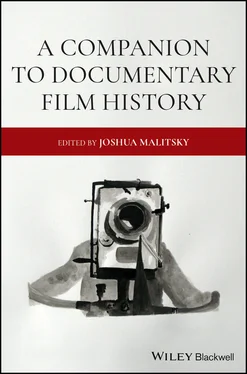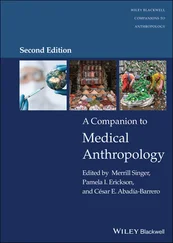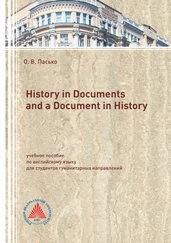8 8“Cummington Packs Town Hall to See Itself in the Films,” The (Pittsfield, Mass.) Berkshire Evening Eagle, 30 January 1946, 4.
9 9Local participation in government documentary was not a new phenomenon, as it was also used before the war. In Jonathan Kahana’s analysis of Joris Ivens’s Power and the Land (1940), he suggests that the film constructs a “public sphere that is depicted in, and eventually embodied by, the film itself.” See Kahana (2008: 131).
10 10“Madison Sees Itself in Preview of OWI Film,” Indianapolis Star, January 14, 1944, 9. A copy of the film was given to the Madison Chamber of Commerce, so it could be screened noncommercially in public and private settings. See The (Columbus, Indiana) Republic, 9 June 1944, 4.
11 11Although the pastor is unidentified in the film, later accounts name him as Rev. Carl Sangree, a conscientious objector during World War I, and a Congregationalist minister. See Richie Davis, “The Cummington Story,” The (Greenfield, MA) Recorder, 30 April 2005. http://www.recorder.com/richie‐s‐top‐40‐cummington‐4080218(Accessed 20 September 2016).
12 12For more on Copland’s role in the film, see Lerner (2005).
13 13For example, the wave of “city symphony” films produced in the 1920s and 1930s encouraged filmmakers and audiences to make connections between modernism and international aspirations. See MacDonald (1997‐1998).
14 14See Goldstein (2009), Kitamura (2010), Wagnleitner (1994), and Fay (2008).
15 15See Kitamura (2010: xii).
16 16As Alice Lovejoy (2018) notes, the selection of American films for exhibition in occupied countries was a logistically and politically complex process, with lobbying groups in the film industry negotiating with government officials which films were appropriate to be screened.
17 17Among the government films adapted by the CAD were the Pare Lorentz pictures The River and The Plow That Broke the Plains.
18 18Smulyan (2007: 100).
19 19Memo from Pare Lorentz to Lt. Col. R. B. McRae, “Documentary Films for Germany,” 29 October 1946. Box 252.
20 20“Reorientation Branch Work Program, Fiscal Year 1947.”
21 21“Army to Release 52 Documentary Shorts in Reich,” Motion Picture Herald, 8 November 1947, 20. The Herald reported that the Army planned to spend $600,000 on documentary films.
22 22Lorentz’s departure may have also been linked to political disagreements over the direction of the CAD. Lorentz, like many other government filmmakers active in the 1930s, was closely associated with nongovernmental leftist filmmaking. Several of the projects proposed by Lorentz – a documentary on African American history titled “The Thirteenth Amendment,” a study of rural cooperatives, and a profile of community organizer Saul Alinsky – reflected this political agenda. Of these proposals, only The Rural Co‐Op was produced. After Lorentz left, the CAD tightened its control over film scripts, and began outsourcing film production to companies accustomed to working on contract. See Memo from Pare Lorentz to Lt. Col. R.B. McRae, “Proposed Productions for Occupied Areas,” 4 October 1946. Box 252.
23 23Memo, Chief, New York Field Office to Chief, Civil Affairs Division, 24 November 1947, Box 254.
24 24The CAD’s film Tulsa, Oklahoma (1949) is apparently the only of the planned six‐film series to come to fruition. In 1950, another CAD film, titled Community Chest, was made in Yonkers. In fact, several CAD films were produced within a few hours’ drive of New York, where the film production unit was based.
25 25Letter from Patrick Belcher to Mary, Undated. Pittsford, Vermont Historical Society.
26 26McCarthy (2010: 99).
27 27“Sun Dial Films to Make Educational, Tele Pix,” Film Daily, 28 June 1944, 2.
28 28“Democracy Film To Show Biloxi Fishing Scenery,” The (Biloxi, Mississippi) Daily Herald, 26 June 1951. Thanks to Ray Bellande for providing these articles.
29 29“Biloxi Students Needed to Take Part in Democracy Films,” The (Biloxi, Mississippi) Daily Herald, 30 June 1951.
30 30Monday Date Set For Beginning of Democracy Film,” The (Biloxi, Mississippi) Daily Herald, 12 July 1951.
31 31Stuart J. Seborer, “Annual Report of Stateside Activities Supporting the Reorientation Program in Japan and the Ryukyu Islands.” October 1950. Reorientation Branch, Office for Occupied Areas. Office of the Secretary of the Army. Washington, DC.
32 32Ibid.
33 33See Immerwah (2015) and Sackley (2011).
34 34For example, the production of The Cummington Story became an important episode in the town’s local history. See Richie Davis, “The Cummington Story,” Greenfield (MA) Recorder. 30 April 2005. http://www.recorder.com/richie‐s‐top‐40‐cummington‐4080218
35 35In recent years moving image archivists from NARA have started placing online high‐resolution digital scans of government films, including A Town Solves A Problem (1950) and The Cummington Story (1945).
2 The Work of Displacement in Colonial Documentary: History, Movement, and Collectivity Between the Postwar Metropole and Colonial French West Africa
Paul Fileri
American University
In the decade following World War II, a fraction of independent documentary cinema on the left emerged from struggles over decolonization within western European empires. This current appears now as a scattered set of projects all designed to make new sense, in moving image and sound, of the crisis in relations among territory, public, race, nation, and empire that anticolonial political movements continued to raise. In the context of the French colonial empire, documentary cinema registered in its formal innovations and public controversies the emergence of new possibilities for social and political transformation. The most radical work did so by confronting how colonial state regulations and cultural institutions policed the production and circulation of documentary cinema. And at its most incisive, this documentary work openly addressed the imperial political order straining to uphold stable administrative and political divisions between the metropolitan center (representing a ruling continental nation of France, identified with mainland Europe territory) and colonial overseas territories. For its makers and critics, documentary filmmaking offered a way to cut across boundaries that sought to keep metropolitan space and time distinct and apart from colonial geographies and histories.
This essay returns to the archive of French colonial documentary to analyze the material and discursive relations between two of these projects – René Vautier’s denunciation of colonial atrocities in his counter‐travelogue Afrique 50 [Africa 50] (1950) and the conflicted collective portrait of the metropolitan everyday life of black African students in Paris made by Paulin Vieyra and the Groupe Africain du Cinéma in Afrique sur Seine [Africa on the Seine] (dir. Mamadou Sarr and Paulin Soumanou Vieyra, prod. Groupe Africain du Cinéma, 1955). It describes how these films seized on documentary’s capacity to shift modes of public address and reflected on the displacements involved in the cinematic act of historical recording and social intervention. It also asks how, in documentary constructions claiming to represent opposition to French late colonial rule, we can regard the montage of new images produced under the threat of colonial state censorship and of existing images reused in new contexts, and how we can make sense of the sounds used in relation to these images. Documentary and its modes of address afforded filmmakers a means to critique norms for representing the relationship of voices and images to social reality. And theirs was an intervention that was especially incisive in the postwar period of political contestation over late colonial rule, when a new rhetoric of modernization, development, and technical expertise was supplanting an older set of official rationales about the French civilizing mission.
Читать дальше












